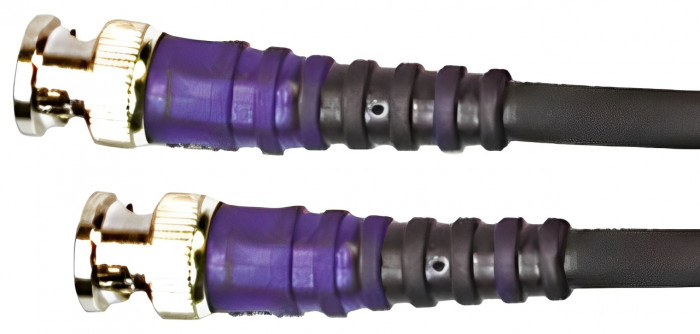
AV cables, short for Audio-Visual cables, are integral components in any setup that involves sound and visual transmission. These cables serve as physical channels that transfer audio and video signals between source and output devices, connecting components such as televisions, projectors, DVD players, gaming consoles, sound systems, and professional studio equipment. Whether it’s analogue or digital, the type of cable you choose has a direct impact on signal quality, user experience, and device compatibility.
Despite the rise of wireless technologies, AV cables are far from obsolete. Their ability to transmit data with minimal delay and interference continues to make them a preferred choice for environments that demand reliability, precision, and high-performance output. For home users, professionals, educators, and audio-video engineers alike, these cables ensure immersive, consistent, and high-fidelity multimedia delivery.
Why Are AV Cables Still Essential in a Wireless Age?
Wireless streaming and Bluetooth technology have undoubtedly transformed media consumption, offering convenience and mobility. However, AV cables offer several significant advantages that keep them relevant across many industries and applications:
Deliver low-latency performance crucial for live events, studio recordings, and gaming setups
Maintain signal quality over longer distances without relying on bandwidth or network stability
Provide backwards compatibility with older systems that lack wireless capabilities
Offer a secure and interference-free transmission medium, especially in electrically noisy environments
Require no additional setup, pairing, or software configurations—just plug and play
In mission-critical environments, professionals consistently opt for AV cables due to their reliability and signal integrity.
What Are the Most Common Types of AV Cables?
AV cables come in various designs to suit different purposes and devices, with some optimised for audio, others for video, and many that handle both.
RCA Cables – These analogue connectors usually feature three colour-coded plugs (yellow for video, red and white for audio). They're commonly used with DVD players, older TVs, and stereo systems.
HDMI Cables – The standard for modern digital devices, HDMI transmits high-definition video and audio through a single cable, supporting features such as 4K resolution, 3d, ARC (Audio Return Channel), and Ethernet over HDMI.
Auxiliary Cables (3.5mm) – Found in smartphones, laptops, and car stereos, these cables are used for analogue stereo audio. They connect directly to headphones, speakers, and amplifiers.
XLR Cables – Utilised in professional audio setups, XLR cables carry balanced audio signals, which are less susceptible to noise and interference. These are favoured in concerts, recording studios, and broadcasting.
DIN Cables – These multipin connectors are used in vintage audio systems, MIDI devices, and some industrial applications. DIN cables can carry analogue or digital signals depending on the configuration.
Component Video Cables – With red, blue, and green connectors, these analogue cables separate video signals for improved clarity and colour accuracy compared to composite options.
Optical (TOSLINK) Cables – Used for digital audio, these cables utilise light to transmit signals, eliminating electromagnetic interference and supporting formats such as Dolby Digital and DTS.
Choosing the right type ensures compatibility, signal quality, and ease of use in your specific setup.
Where Are AV Cables Most Commonly Used?
AV cables have a broad spectrum of applications in both personal and professional environments:
Home theatres and living rooms for connecting set-top boxes, game consoles, and surround sound systems
Recording studios for audio monitoring, speaker connections, and microphone feeds
Corporate environments for AV conferencing, training presentations, and video wall integrations
Educational institutions with projectors, soundboards, and interactive display systems
Automotive systems, including infotainment consoles and dashboard audio-video units
Surveillance systems transmit camera footage to monitors and DVRs
Entertainment venues, including concerts, cinemas, and event production rigs
These examples show the depth and diversity of AV cable use across various industries and needs.
How Do You Select the Right AV Cable for Your Setup?
Picking the correct AV cable involves a mix of technical understanding and practical judgment:
Determine the type of signal—analogue or digital—that your devices require
Check the input/output ports on your devices to ensure connector compatibility
Consider the length of cable needed—longer runs may need thicker cables or signal boosters to maintain quality
Think about the installation environment—shielded or weather-resistant wires may be necessary
Look for certified versions of digital cables, like HDMI or optical, to ensure they meet performance standards
Evaluate whether your setup involves stereo or multi-channel audio and SD, HD, or 4K video signals
A poor cable choice can degrade performance, introduce noise, or even prevent connectivity altogether.
What Features Define a High-Quality AV Cable?
Investing in superior AV cables can result in better performance, durability, and signal integrity. High-quality cables typically include:
Multiple layers of shielding to prevent signal loss and electromagnetic interference
Gold-plated connectors to resist corrosion and ensure a secure connection
Oxygen-free copper conductors for improved signal clarity and reduced impedance
Strain relief and flexible jackets for protection during bending or movement
Low-capacitance designs to reduce latency and maintain accuracy
While budget cables may suffice for short distances and casual use, professional or high-performance environments greatly benefit from premium-grade cables.
What Are Some Common Mistakes to Avoid When Using AV Cables?
To get the best out of your AV cables and prevent unnecessary damage or signal issues, avoid the following:
Bending or twisting the wires beyond their flexibility rating
Running AV cables in parallel with power cables, which can introduce noise
Leaving connectors loose or partially inserted, which leads to poor signal transmission
Using overly long cables without considering signal loss or attenuation
Overloading connection points with incompatible adapters or splitters
Proper installation and maintenance can significantly extend the life of your AV cables and ensure consistently high performance.
What Are the Emerging Trends in AV Cable Technology?
While wireless streaming is expanding, AV cable technology continues to evolve to meet future demands:
Ultra High-Speed HDMI for 8K and even 10K resolution support with enhanced refresh rates and audio return features
Active Optical Cables (AOC) that combine copper and fibre for long-distance digital transmission with minimal signal degradation
USB-C AV Convergence enables audio, video, power, and data through a single reversible connector for laptops, tablets, and phones
Hybrid AV cables that bundle multiple signal types together to reduce clutter in high-density installations
Eco-friendly designs focusing on recyclable materials and energy-efficient manufacturing practices
These developments highlight the ongoing relevance and innovation in the AV cable space.
Why Do AV Cables Remain the Professional’s Choice?
For professionals who can’t afford signal failures or latency, AV cables remain the go-to solution:
Deliver predictable performance with no dependence on external factors like Wi-Fi interference
Allow physical troubleshooting—faults are easier to detect and isolate
Offer customisable cable lengths and configurations for tailored studio or stage setups
Support high-end equipment that still relies on wired standards for maximum fidelity
Audio engineers, video editors, IT specialists, and event technicians rely on AV cables for their consistency and adaptability.
Conclusion: Are AV Cables Worth Your Attention Today?
AV cables continue to play a vital role in the digital age by offering unmatched quality, low-latency performance, and dependable connectivity. While wireless solutions provide convenience, they still fall short in environments where stability, speed, and signal clarity are paramount. By understanding the types, applications, and advantages of AV cables, users can make informed choices to enhance their multimedia experience.
Whether you're building a cinema-quality home theatre, configuring a conference room, or installing a live sound system, the right AV cable can make all the difference.












